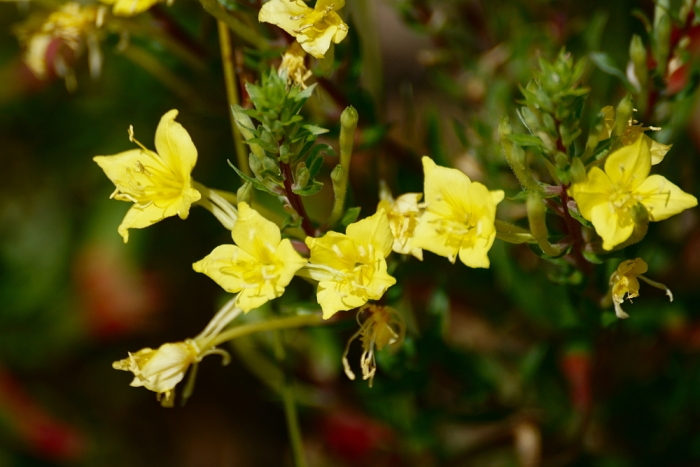Cleland’s Evening Primrose
(Oenothera clelandii)
Cleland’s Evening Primrose (Oenothera clelandii)
/
/

© psweet
CC BY-SA 4.0
Image By:
© psweet
Recorded By:
Copyright:
CC BY-SA 4.0
Copyright Notice:
Photo by: © psweet | License Type: CC BY-SA 4.0 | License URL: http://creativecommons.org/licenses/by-sa/4.0/ | Uploader: psweet | Publisher: iNaturalist |



























Estimated Native Range
Summary
Oenothera clelandii, commonly known as Cleland’s Evening Primrose, is a biennial or short-lived perennial herb native to prairies and glades in the central United States. It typically grows to a height of 1-3 feet (0.3-0.9 meters) and a width of 0.3-0.7 feet (0.09-0.2 meters). The plant features lance-shaped leaves and bears showy yellow flowers with a delicate fragrance that bloom in the summer and fall, opening in the evening and closing by the next noon.
Cleland’s Evening Primrose is valued for its drought tolerance and the evening-opening flowers that attract pollinators such as moths. It is often used in native plant gardens, wildflower meadows, and as a border plant in xeriscaping. This species thrives in full sun and requires well-drained soils, making it suitable for gardens with poor, rocky, or sandy soils. While generally low-maintenance, it can self-seed prolifically under favorable conditions, which should be managed to prevent unwanted spread.CC BY-SA 4.0
Cleland’s Evening Primrose is valued for its drought tolerance and the evening-opening flowers that attract pollinators such as moths. It is often used in native plant gardens, wildflower meadows, and as a border plant in xeriscaping. This species thrives in full sun and requires well-drained soils, making it suitable for gardens with poor, rocky, or sandy soils. While generally low-maintenance, it can self-seed prolifically under favorable conditions, which should be managed to prevent unwanted spread.CC BY-SA 4.0
Plant Description
- Plant Type: Herb
- Height: 1-2.5 feet
- Width: 0.3-0.7 feet
- Growth Rate: Moderate
- Flower Color: Yellow
- Flowering Season: Summer, Fall
- Leaf Retention: Deciduous
Growth Requirements
- Sun: Full Sun
- Water: Low
- Drainage: Fast
Common Uses
Bee Garden, Bird Garden, Butterfly Garden, Deer Resistant, Drought Tolerant, Hummingbird Garden, Low Maintenance, Rabbit Resistant
Natural Habitat
native to prairies and glades in the central United States
Other Names
Common Names: Cleland’s Evening-Primrose, Sand Evening Primrose
Scientific Names: , Oenothera clelandii,
GBIF Accepted Name: Oenothera clelandii W.Dietr., P.H.Raven & W.L.Wagner